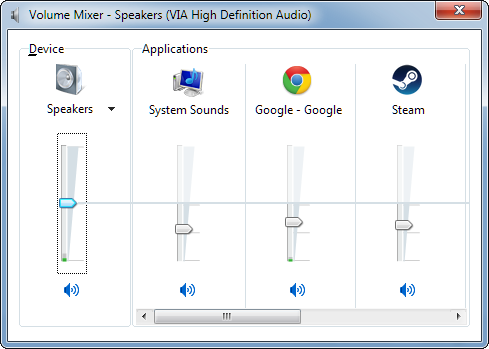The most popular of these is the Windows Shim Cache (a/k/a Application Compatibility Database, a/k/a AppCompatCache), a resource that can be used to catalog applications not natively compiled for newer Windows. It's also a resource that works great for finding APT-related malware running on a system, but not so much legitimate applications.
For a few months I've been playing with another repository of applications: the Windows Sound Mixer. Whenever an application requests the use of the Windows audio drivers, Windows will automatically register this application in the registry. This information is stored so that Windows can create per-application sound settings:
This was a resource I dismissed for a year. It existed only in Windows Vista and newer, it didn't catch any of the malware I threw at it, and wasn't relevant to any of the Incident Response work I do**. Its importance came to me when working some cases that came mixed in with many of my intrusion cases where I had to examine the systems owned by various hackers. One in particular involved tracking the use of alternative web browsers and discovering that the Sound Mixer had catalogued the use, and location, of Tor Browser launched from a TrueCrypt volume. Clear as day, the path even noted that it was a TrueCrypt volume based upon the Windows device name:
\Device\TrueCryptVolumeP\Tor\App\Firefox\firefox.exe
I learned that the registry keys were useful for such cases, but there has been no prior public discussion of the forensic use of this data.
